Why is it Interesting to Look at Chinese Car Brands?
The Market Potential
Today, the sales numbers from Chinese car manufacturers don't seem threatening to established car companies but they have plenty of reasons to be worried. The Chinese car industry is following a path that is quite similar to the South Korean industry a few decades ago. Before the '90s, South Korean car manufacturers were producing mostly for domestic and emerging markets. Their cars were cheap and of questionable quality, and no match for the manufacturers from Europe, USA, and Japan. But through rapid development, brands like Hyundai and Kia have made giant leaps and established themselves in most markets as high-quality alternatives for these established car manufacturers.
The same trend can be seen in China. It has been an important manufacturing source for many years, so the knowledge of how to produce cars was already there. First, Chinese car companies started out by copying existing models and selling them in domestic and emerging markets. As they gained experience, they got another boost through government-mandated joint ventures with foreign car companies wanting to enter the Chinese market.

And now, just like the South Korean story, they are about to cross the final bridge and develop cars that rival competitors from established brands in markets all over the world. There is one difference however: the Chinese car industry has much bigger market potential. It does not take a lot of imagination to understand why. Here are some basic facts about transportation in China:
The Chinese market is the largest in the world and it keeps growing. Between 2005 and 2030, China’s car market is expected to grow ten-fold.
Since 2009, Chinese car sales have surpassed US car sales to be the highest in the world. In 2019, 21,4 million new cars were sold in China compared to 4,7 million in the US.
In 1988, China had zero kilometers of expressway. By the end of this year, it is projected to have over 168,000 kilometers, way more than any country in the world. Since 2011, around 10,000 km are added per year. That is more than 27km per day.

Next to infrastructure, the Chinese government is heavily investing in its domestic car industry. Last year, 40% of Chinese car sales came from domestic car manufacturers. This ratio has been increasing every year, especially considering the government is fully committed to electric mobility, both for environmental reasons and because of the competitive advantage it will give its economy.
As such, the government's goal is to have five million battery-electric and plug-in hybrid electric cars on the road by 2020, while also producing one million such vehicles annually by 2020.
At the moment, there are more than 20 electric car startups. Every month it seems, a new promising car or brand is launched.
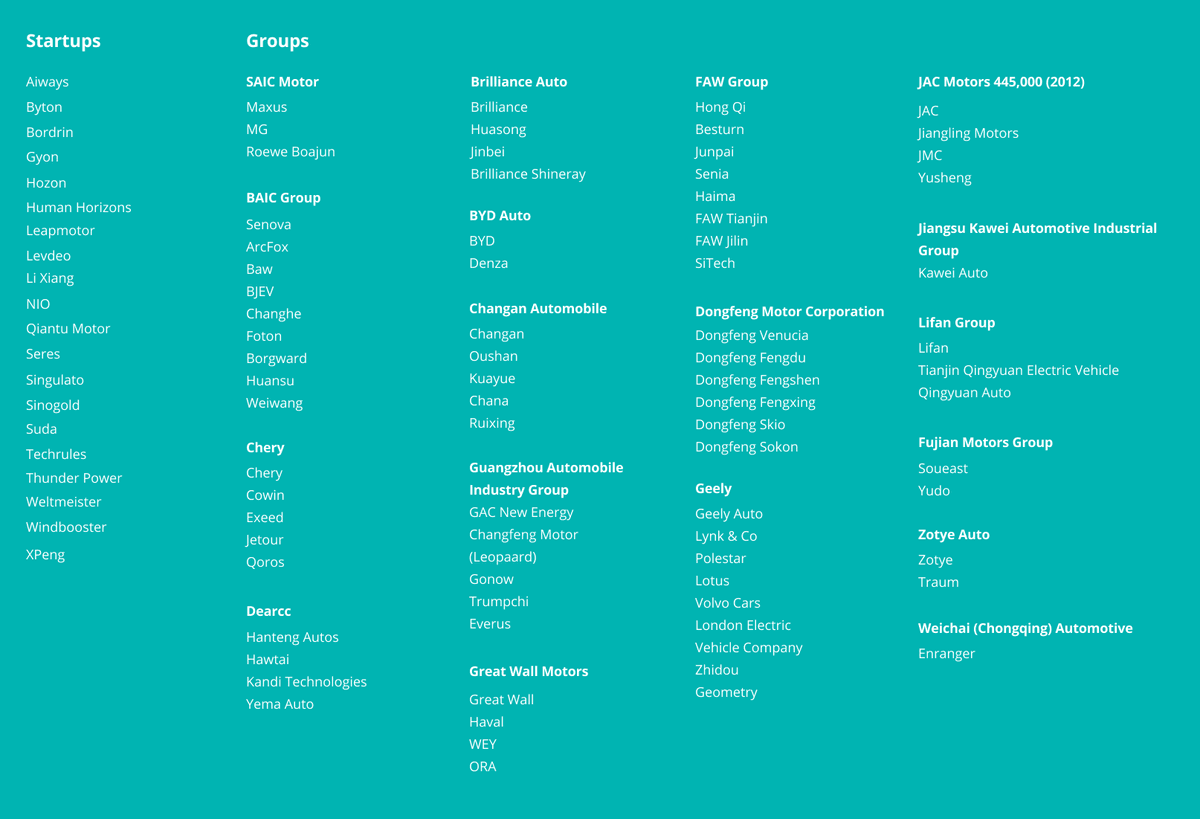
Innovation
Next to the rapidly growing market, the other reason why the Chinese car industry is interesting is innovation. Imagine you are the CEO of Volkswagen. For years you have been successfully producing mass-market cars of the same formula: reliable engine and decent performance, comfortable cabin, good build quality, and competitive pricing. However, over the past few years, some big shifts have been happening. Legislation and consumer demand are moving towards electric mobility, and software is becoming a much more important factor both for user experience and topics like autonomous driving. Volkswagen now has to transform a massive organization to change its focus to fit these new market demands which it obviously can't do overnight. The early innovation in these fields will, therefore, come from the companies that can make this change as quickly as possible.
If you are starting a new car company, you can start from a blank page and incorporate these changes throughout your organization and use these as a unique selling point. Tesla is a great example of this as it is often said that it is run like a technology company. As the car industry will go through more big changes in legislation, consumer demand, and technology, the most successful will be the companies that can adapt to these changes quickly.
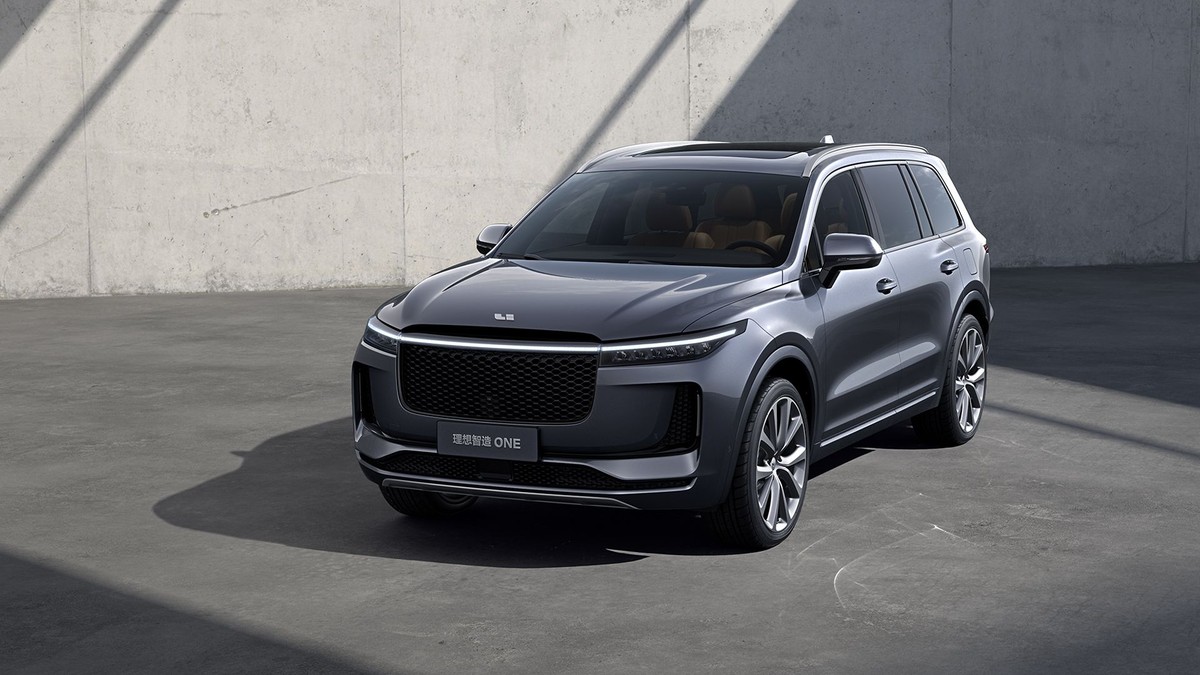
This is great news for Chinese car companies since a lot of them are young and are building their organizations to fit these changes. More importantly, to these upcoming companies, these challenges create the perfect market opportunity. Not only do they understand this, but they can also count on the full support of the Chinese government as it is a perfect opportunity to create a booming economy and invest in the future of the country. So while European and American car brands are hesitant to invest in these transformations of their companies and products, Chinese brands are eager to jump in this gap it is creating.
The Startup Scene
The pioneers in this race for market opportunities are startups because they are willing to take big risks. As I mentioned before, there are more than 20 car startups at the moment in various stages of development. Although, when you read this, there may be many more. For this post, I focused only on cars that are meant for mass production even if they have not reached that stage yet and disregarded futuristic concepts. For each brand, I was only concerned with the interesting and innovative designs of their products. So I did not take into account anything related to engine specs, market viability, business plans, and more.
For each startup brand, it was clear that they wanted to fill the gap of electric, technologically advanced cars. Design fits within that as the exterior and interior design of most of them are not inferior to their established competitors. One might argue that some brands are designing cars that are cleaner and more beautiful than the current suite of overly designed premium vehicles.
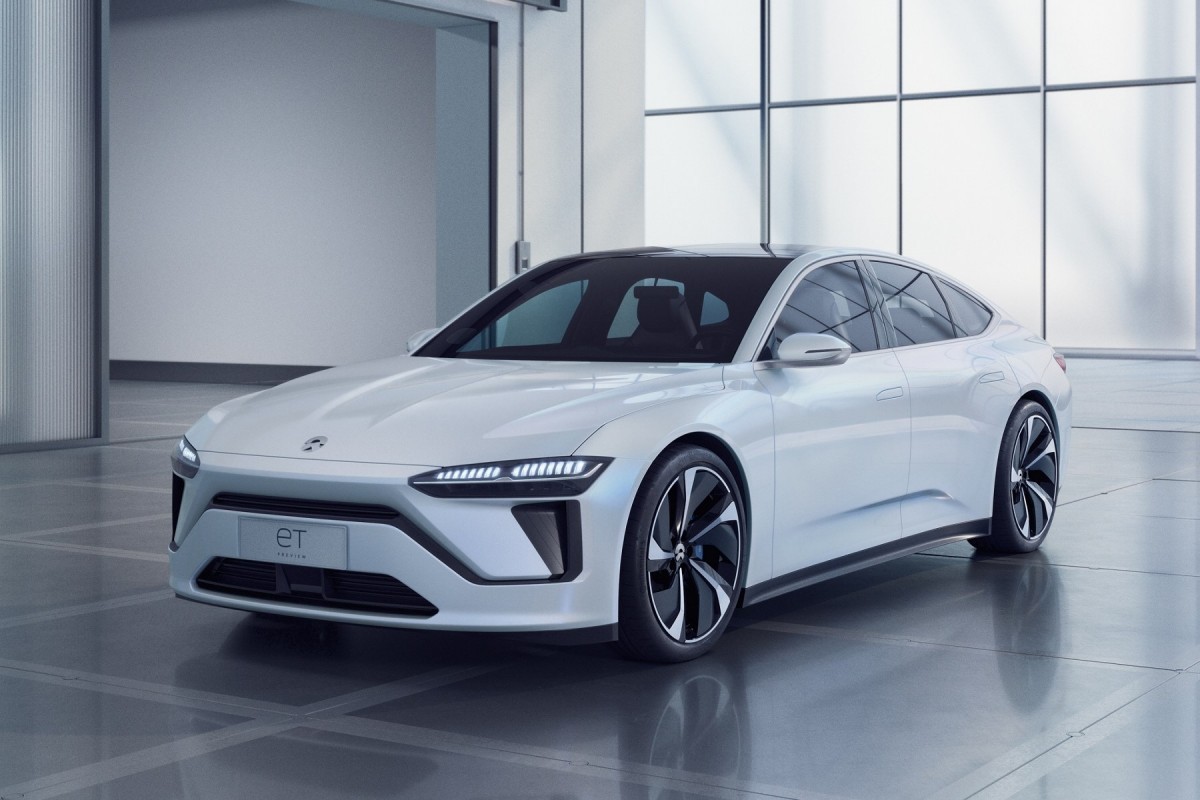
Most startups are in the early stages of development and have presented only one model. In a lot of cases, it is some form of crossover SUV with an interior covered in screens. Although there is definitely a greater variety in body types compared to the rest of the electric car market.
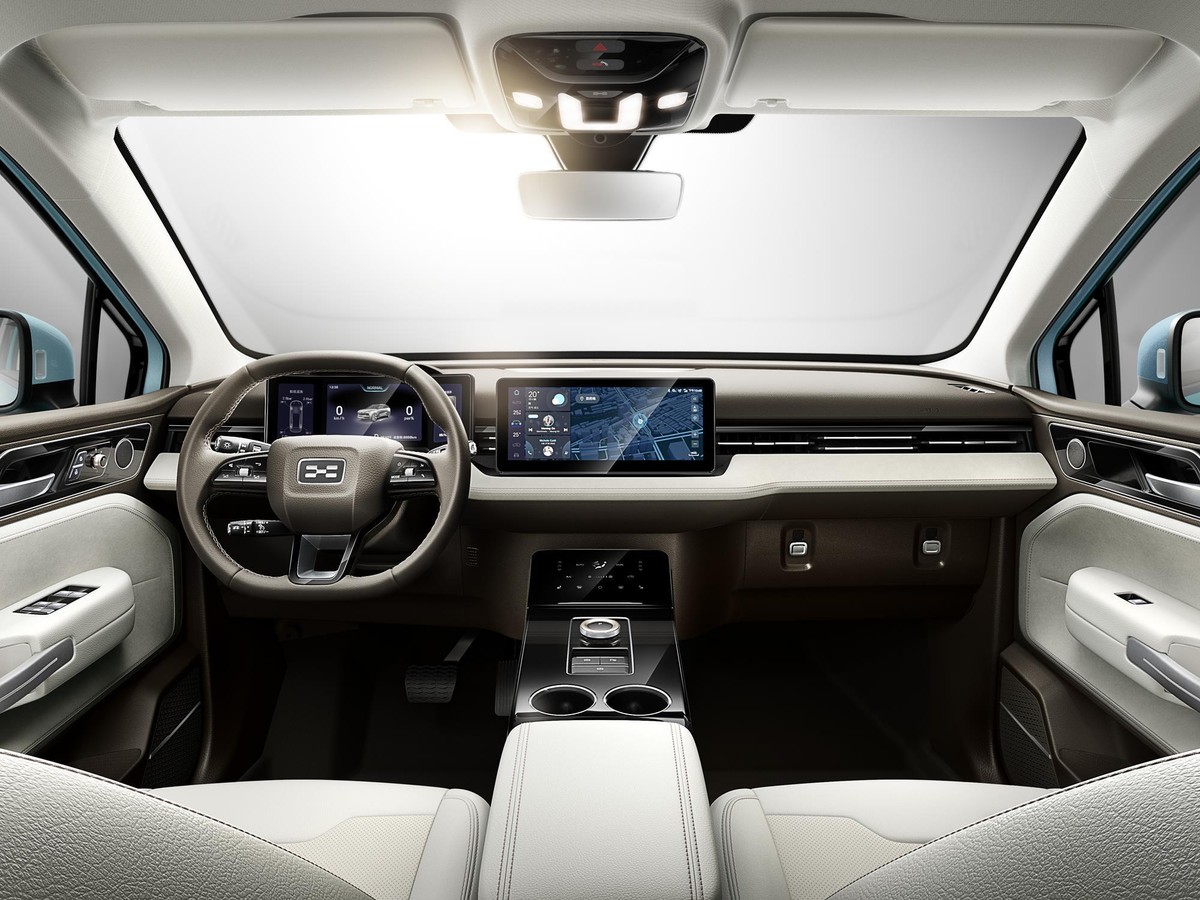
When researching the startups, I had hoped to see a bigger variety of high-level concepts. The position of the car in modern-day society is at the center of many discussions at the moment. There are so many different solutions and roles that the car can take in the future. I had expected to see more progressive ideas that solve these various mobility problems. To my surprise, each brand offers largely the same product, even the concept cars show little imagination. The distinction lies mainly in specific features, specs, and business models.
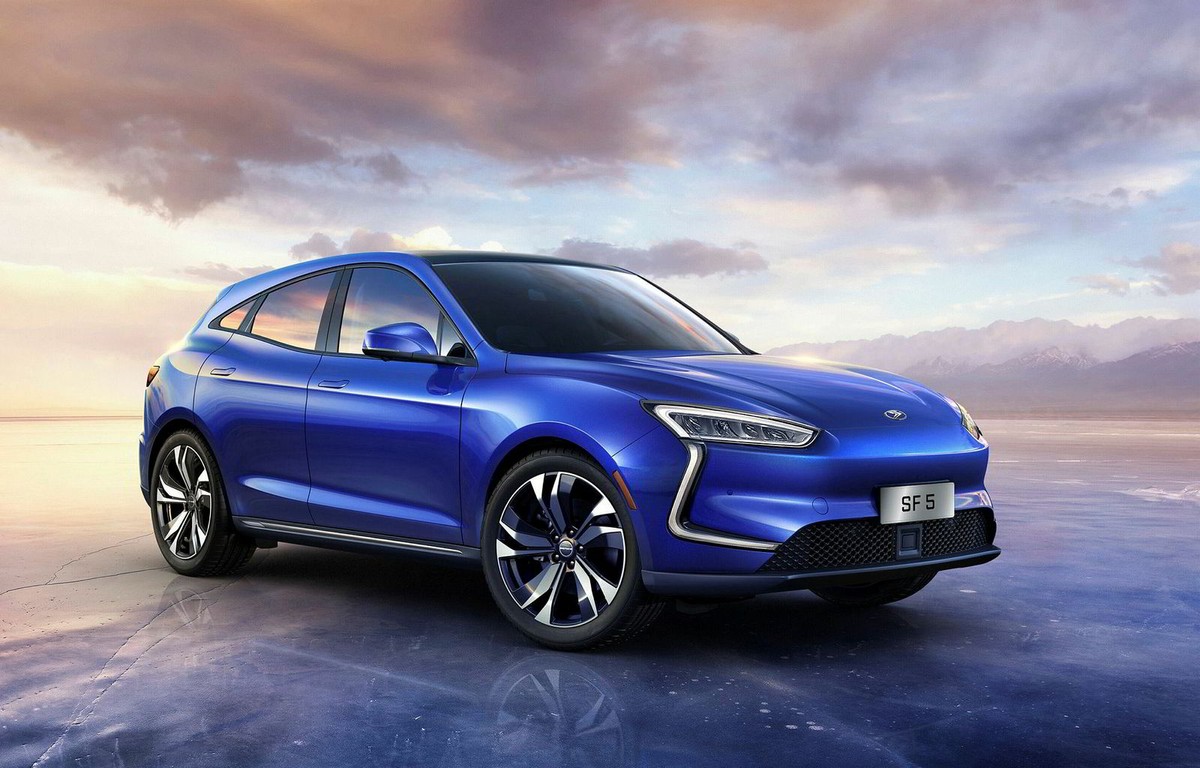
From a UX perspective, there are some interesting trends visible in most startups that don't have the same focus yet as in the west. One big one is facial recognition. Nearly all cars featured some form of facial recognition for unlocking the car and fatigue monitoring. A lot of those cars got rid of physical keys and start buttons altogether and used facial recognition together with smartphones for unlocking and starting the car. This is certainly a trend that will come to the rest of the automotive industry, especially with recent partnerships between tech giants like Apple and car companies.
The second clear trend is a visible intelligent assistant. Voice interaction is now widely available in most cars around the world. But they mostly exist in the background, activated by a button press or a voice command. In a lot of Chinese cars however, the voice assistant has often been somewhat anthropomorphized with eyes and other humanlike features. The clearest example of this is NIO's assistant Nomi who has also been given a more prominent place on the dashboard.
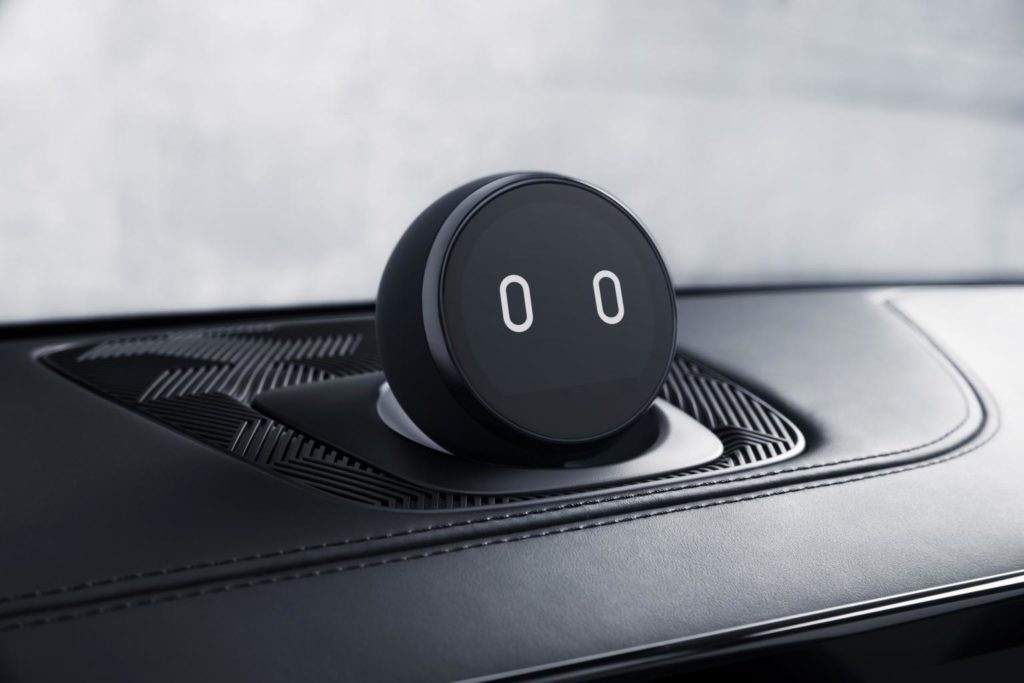
The reason why they are anthropomorphized can probably be attributed to cultural differences, but it is interesting how this has not really been explored by many of the western car companies.
Next to these two specific features, when it comes to the interaction between the user and the car, I noticed that there are not many original ideas. There are so many opportunities to create new ways of interacting with the car, but most brands are following established car companies and use a similar layout with touch screens and few physical controls. The same can be said for the UI design. Although a lot of the brands have great hardware and well-designed interfaces, they can't be called original. Some even blatantly copy existing ones.

It is understandable that startups make these decisions as they largely differentiate themselves through the level of innovation and not through unique UX design. This is disappointing because these two fields are not mutually exclusive. In fact, they reinforce each other.
Luckily, there are many startup car brands in China and some do present refreshing ideas. These fall into three categories: safety, communication, and user experience.
The Concepts
1 - Hozon Neta U - Safety
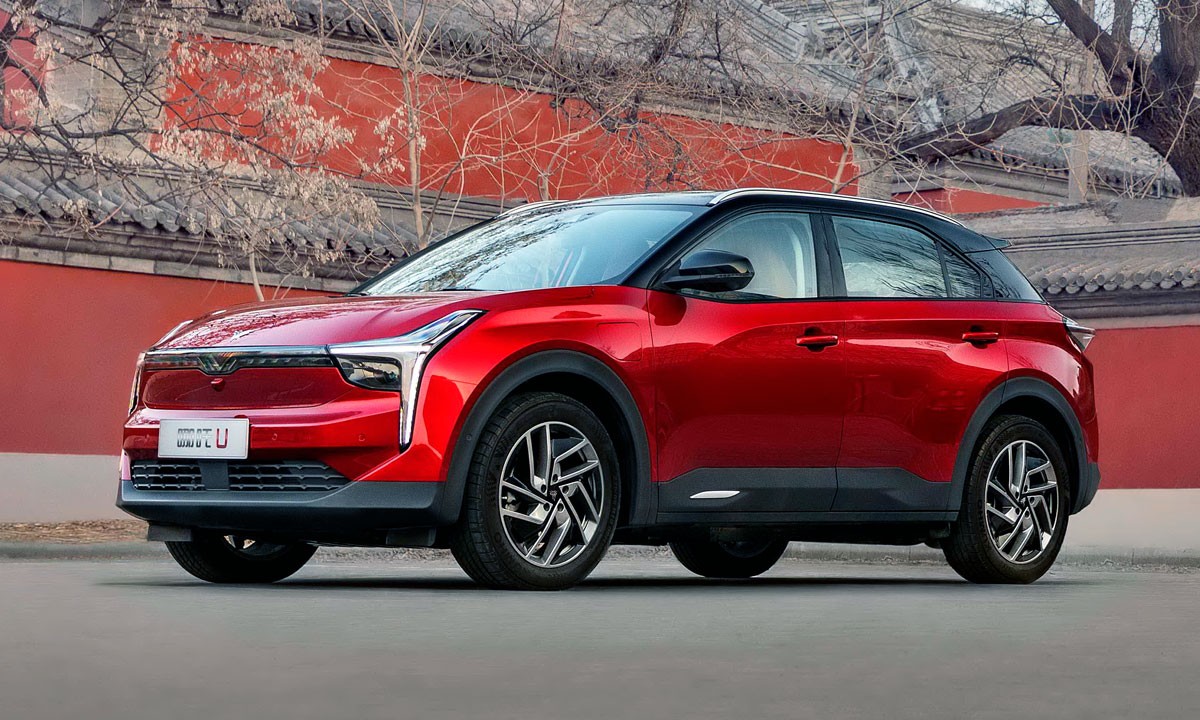
Hozon Auto was founded in 2014 as an electric car startup. They released their first model, the Hozon Neta N01 compact SUV in 2018. The car in question is their second model, the Hozon Neta U which was presented during the Shanghai Auto Show in April 2019. It is positioned as a mid-sized SUV competing with cars like the Tesla Model Y and Volvo XC40. Hozon is currently accepting orders for the car but it is not being produced yet.
The interior of the car features one wide cluster unit with two screens in it, similar to the current layout of Mercedes. There is another touch screen in the center console with physical climate control buttons. Following the trends discussed earlier, there is a camera behind the steering wheel that tracks your eye movement, monitors fatigue, and has facial recognition capabilities. Also, Hozon opted for a prominent 'visual' voice assistant that sits on top of the dashboard.
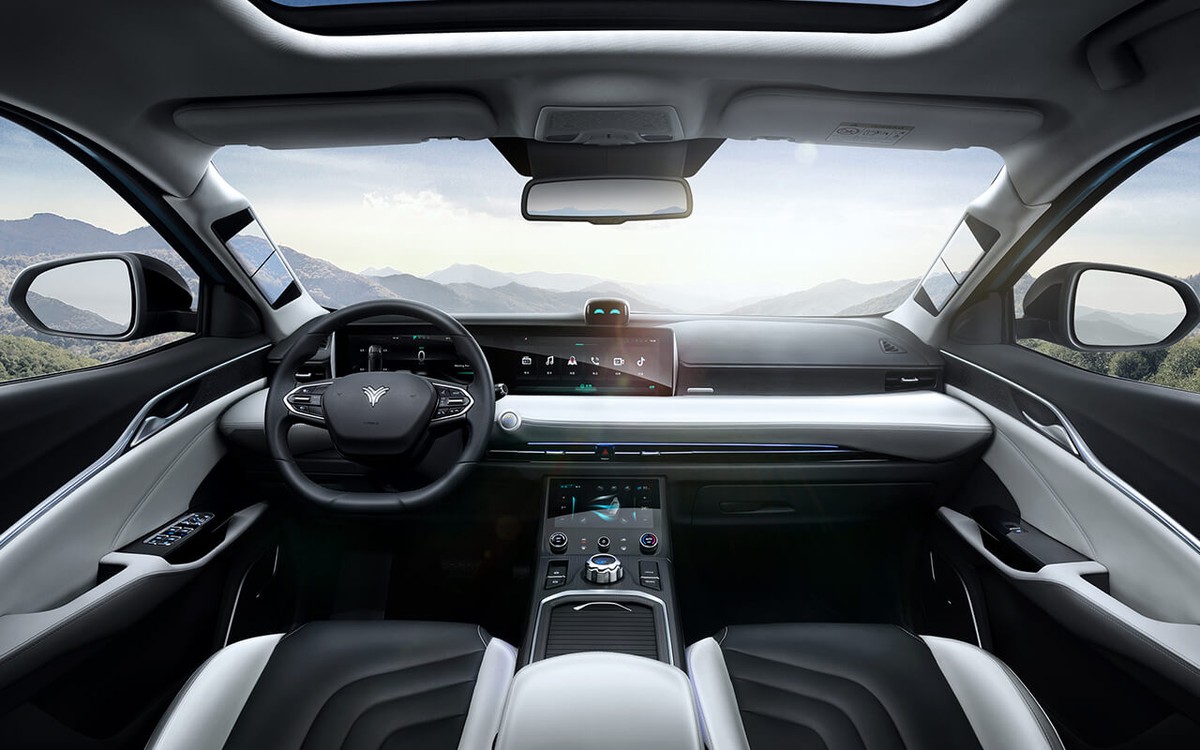
By far the most interesting feature of this car is the screens in the A-pillars. Due to increasing safety regulations, A-pillars in all modern cars are very wide and greatly obstruct the view out of the car, especially at intersections. Hozon is the first production car to place screens in the a-pillar with a camera feed that makes the a-pillars invisible to some extend.
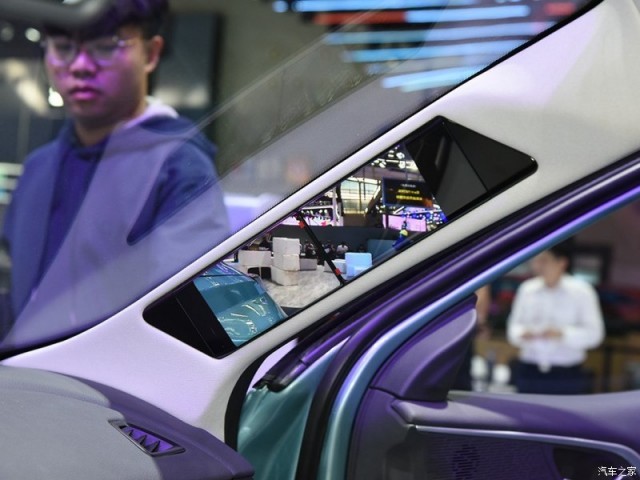
It is a great idea that has been shown on many concept cars already, but Hozon is the first to develop a system for production. I could not find a source that shows how the system works in real use cases. So far, it has only been showcased during car shows. I am very curious to find out what the impact of such a system is on visibility, driver distraction, and crash safety.
2 - Human Horizons HiPhi 1 - Communication
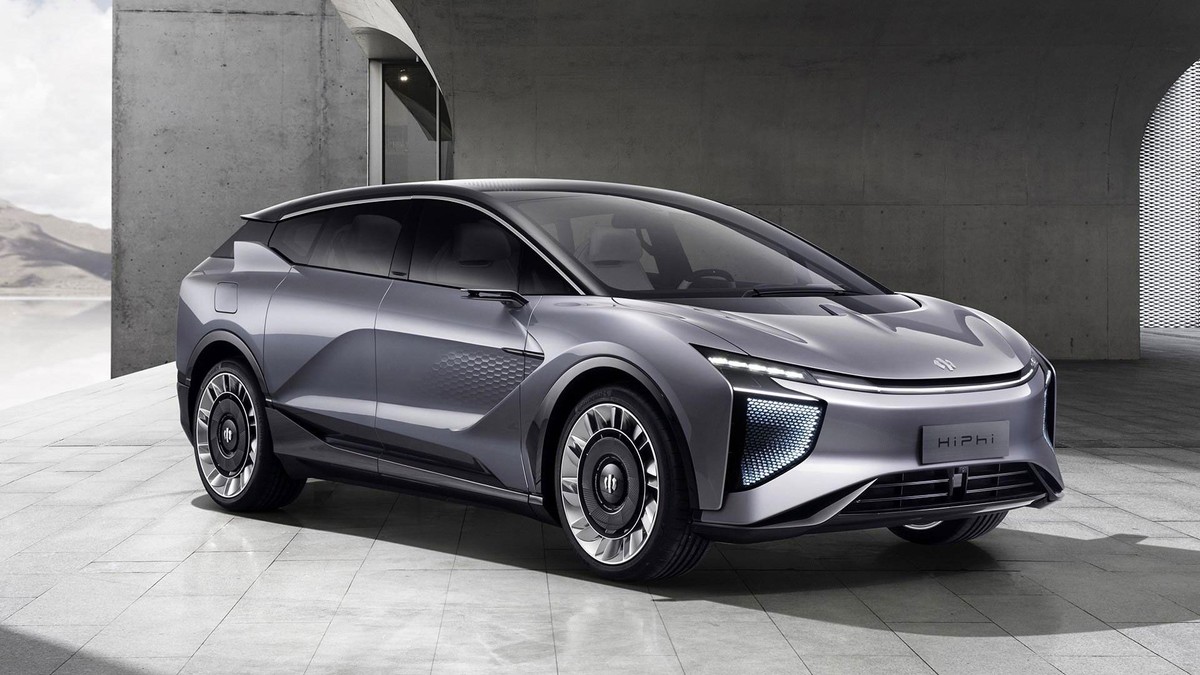
The next startup is Human Horizons who see themselves as an urban mobility company rather than a traditional car company. Their plan is to offer smart mobility in three different fields. The first is the field of public transportation in the form of autonomous electric buses. Second, in the field of infrastructure by offering various smart city solutions related to software platforms and sensor systems.
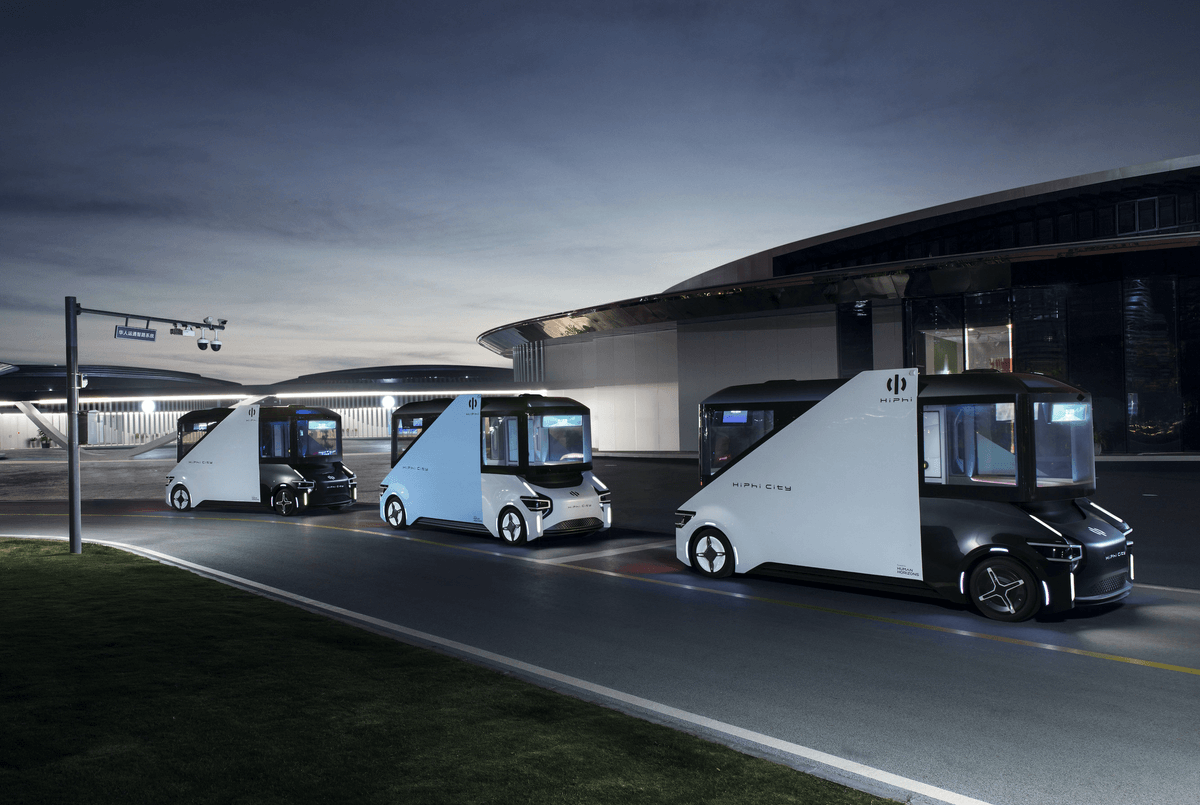
The third field is personal transportation and the HiPhi 1 is the solution for that. It is a high-tech luxury crossover with six seats. They differentiate themselves from other electric car startups by creating the most high-tech car possible. The car is capable of at least level 3 autonomous driving. It is also the first production car with 5G which it uses to integrate with Human Horizons' smart city concepts.
What is impressive is that they develop most of the software in-house on what they call the Human Oriented Architecture. This AI will enhance the user experience by learning and adapting to the users, therefore, predicting many of the interactions that used to be controlled by a touch interface. It is unclear exactly how it will work in practice but it will likely predict navigation destinations, music preferences, and more.
The interior design reflects the high-tech philosophy. There are screens fitted everywhere. There is a digital cluster screen and a vertical center display just like most other startups. But in the HiPhi 1, the passenger also has a big display that is slightly obscured from the driver so that the passenger can watch movies without distracting the driver. Last, there are also screens in the door panels to control some settings like the climate controls.
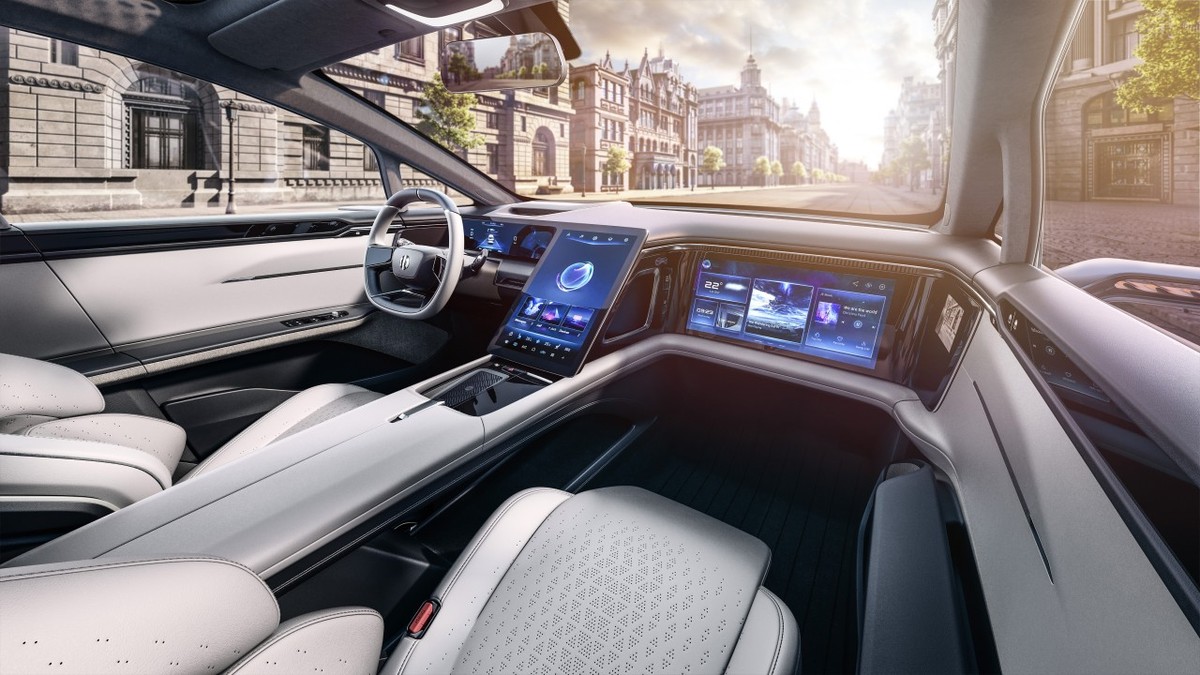
The interior however is not that different from what has already been done by other car companies. The most interesting idea from this car is the light units below the front and rear lights of the car. They are meant for communication with other road users. It is not clear yet how they are operated but they can display an array of images and animations. According to Human Horizons, the display will adjust to your mood which is measured via various biometric sensors. It can display messages such as 'baby on board', a thumbs up, or warn drivers around you of a pedestrian crossing.
Next to the LED matrices, the car can also display a message on the ground in front of it. This is meant both for the driver, to highlight dangers in the road surface, and pedestrians, for communication.
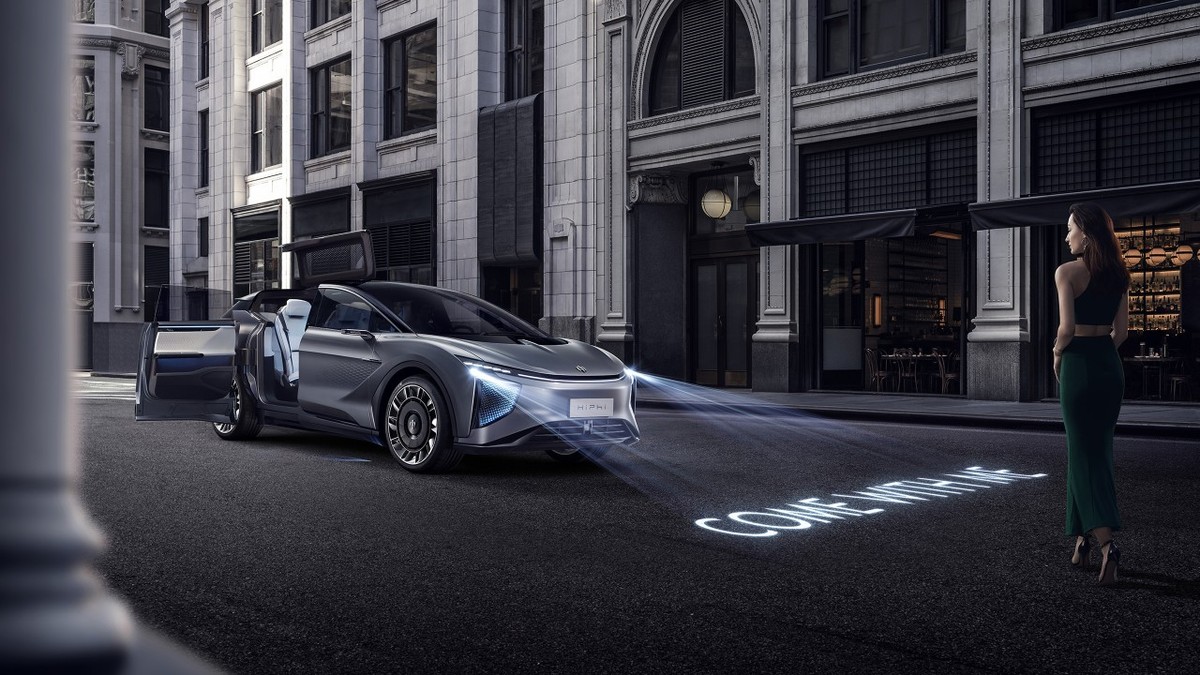
The concept of enhancing communication between road users is another one that is explored a lot in concept cars. It is a really interesting idea because today everybody is driving around in their aggressive-looking, protected metal cocoons, and the only way to communicate is via a loud horn or by flashing the lights, both are not very friendly. Designing a way to communicate your intentions with more detail will make traffic safer and much friendlier.
3 - Weltmeister EX5 - User Experience
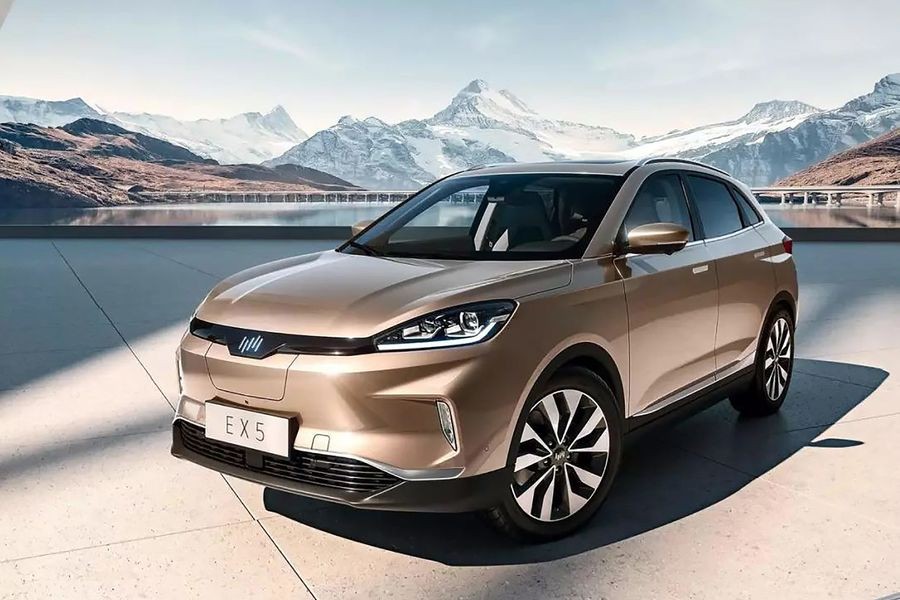
Weltmeister was founded in 2015 and launched the EX5, their first model, in 2018. Their investors include tech giants Baidu and Tencent. Its name, meaning 'world champion' in German leaves high expectations for its products.
Although the EX5 may not have the most exciting exterior, the interior is quite interesting from two perspectives. First, the interface design is different from the status quo in the car industry. As you can see from the image below, the visual design is colorful, playful, and modern.
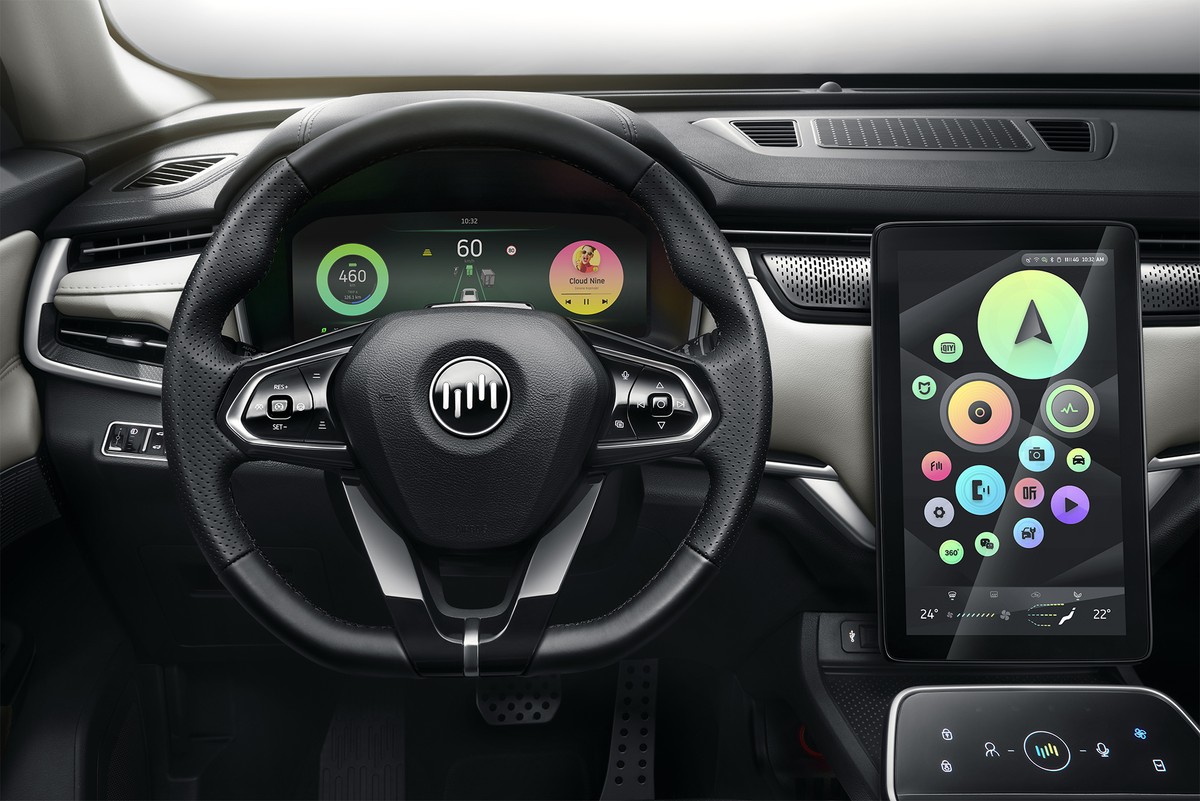
It is hard to judge accurately without trying it, but it seems like the interface of the center display is actually designed around being used while driving. That means that the buttons have very big touch areas, there are shortcuts for often used interactions which saves time, and there is a minimal amount of information on both the cluster and the center screen which makes the interface simple and easy to understand. It may not seem like such a big deal, but most car companies can't match this level of interface design. It is really refreshing to see a car company try something different that actually seems well researched.
The second factor that contributes to the user experience is the idea that the car is not just meant for driving, but it can also be a space for other activities to pass the time. The most basic example of this is the time you spent while charging the car. To facilitate this, the center screen can be rotated with the press of a button. The interface then changes and it turns into a media center giving you the ability to watch movies or videos while sitting in the car.
In the coming years, I predict that cars will be designed to be more versatile. Especially as self-driving technology is improving. They will become more than just a tool that brings you from A to B but could be used to as a space to hang out with friends, as an office, or meeting room. So far, there have not been many concepts that facilitate this, even in a small way. This rotating screen is just a small feature. But it is only one of the very few examples of car companies thinking further than just transporting people.
In this post, I wanted to explore the state of user experience design of Chinese car startups. I went in with a lot of expectations, especially considering the huge market potential and rapidly changing consumer demands. Though, many of the companies provide similar solutions to the mobility problem. There is a lot of room for innovative concepts and brands like Hozon, Weltmeister, and Human Horizons are taking the first steps to move in a new direction.
With rapidly growing vehicle ownership, urbanization, and climate change, it will be interesting to see what solutions the Chinese car companies will come up with. In my next post, I will continue exploring this topic by looking at the big car companies of China. Sign up below if you would like to get notified when I release the post.
Get notified of new posts
Don't worry, I won't spam you with anything else

